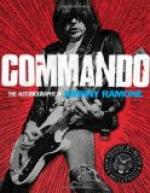While we were reconnoitring with Captain Kirsten’s party we got the news that De la Rey had attacked Selikatsnek—about an hour’s ride from where we were—and that the battle was still going on. We all rode to the scene of action, but my brother and I, with a few other men, remained behind to wait for Captain Kirsten, who was absent at the time. As soon as he arrived we rode off, and arrived at Selikatsnek at about nine o’clock. Our burghers had already taken two of the enemy’s guns.
Selikatsnek (or Moselikatsnek) is a narrow opening in the Magalies Mountains, with high shoulders on either side, that slope gradually to a white kopje in the centre. If an attacking party once occupies the shoulders, it can easily keep the enemy on the kopje or on the two slopes. When we arrived our burghers already occupied the principal positions—both shoulders and the smaller positions to the front of the kopje. The enemy had been obliged to draw in their clipped wings, and to concentrate on and in the neighbourhood of the white kopje.
But as the shoulders of the pass were very steep on the other side, our men could not surround the enemy or attack them in the rear; and as there was not sufficient cover for them to go down the slope without great loss, in order to drive the enemy by force from their positions, the burghers remained ‘rock-fast’ in their positions, and made no progress at all. Thus, the enemy would either get reinforcements from Pretoria or escape when it got dark. Both our flanks kept up a constant fire on the slopes, and on the white kopje, but the shoulders were too high for a proper aim, and the khakies lay fast behind the boulders and in the clefts of the rocks.
Captain Kirsten, with about ten men, was ordered by General Coetzee to hold a position to the right of the white kopje, and prevent the enemy from taking it. This position consisted of a small rise, from which we could fire at the kopje with a sight of 550 paces. To the right of this rise, at a distance of 80 paces, was a small kloof overgrown with bushes, and on the other side of the kloof ran a reef of rocks in the direction of the white kopje. Here some of the burghers had before our arrival forced eleven




